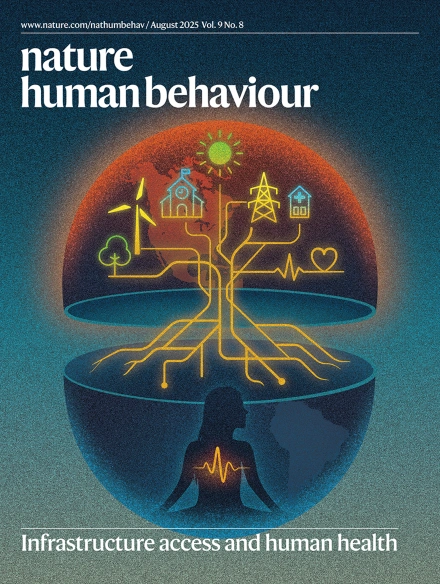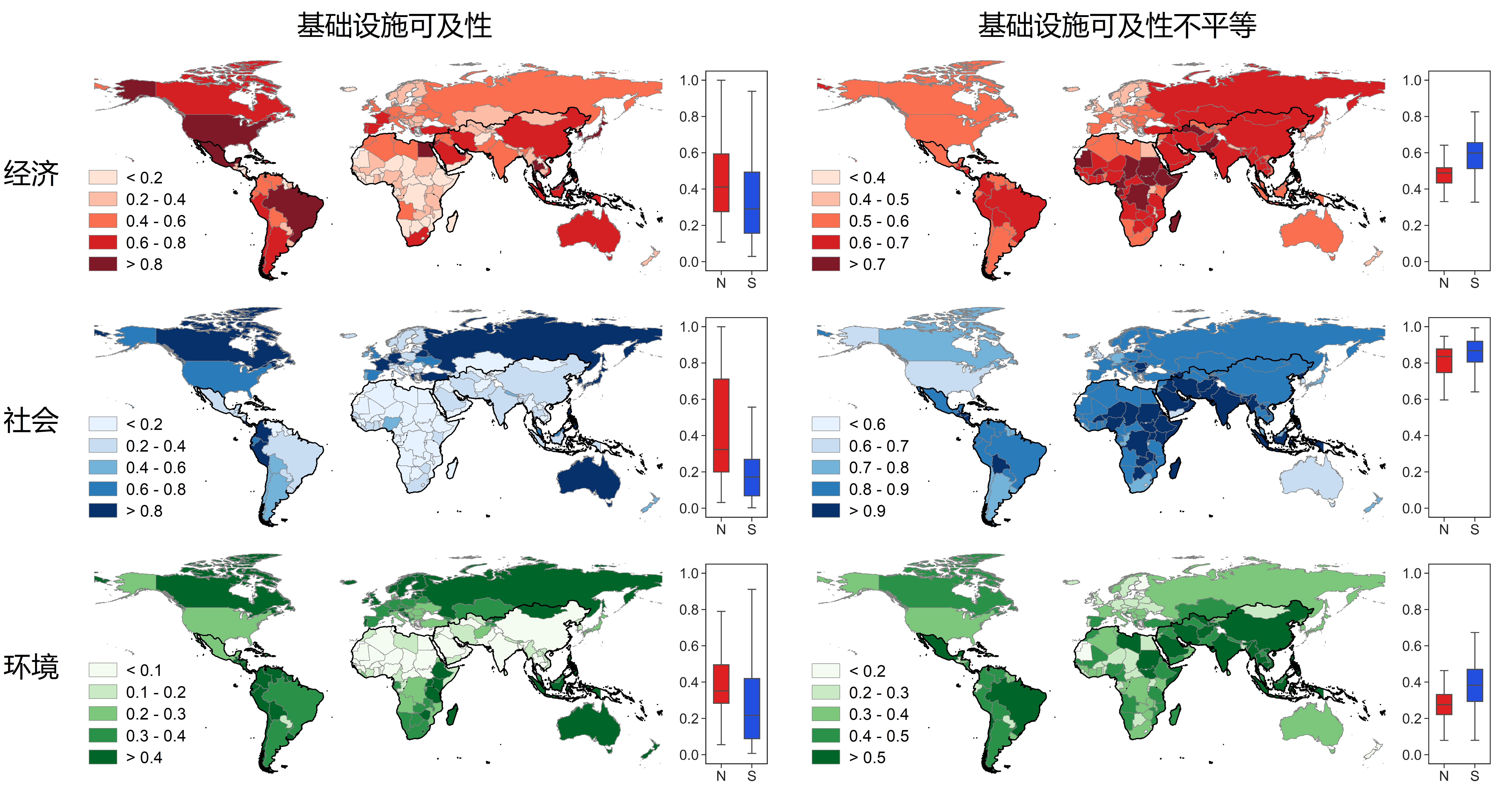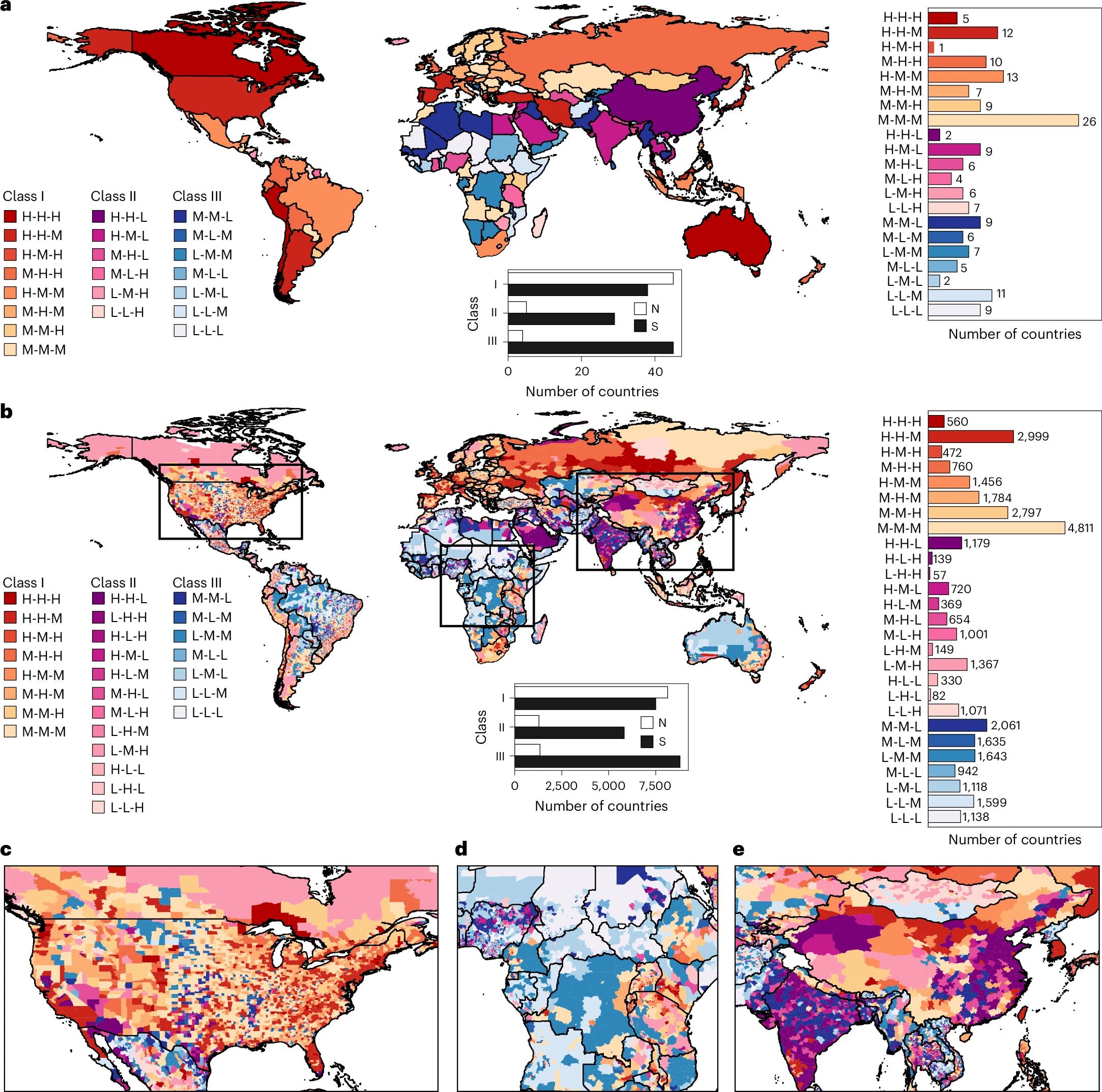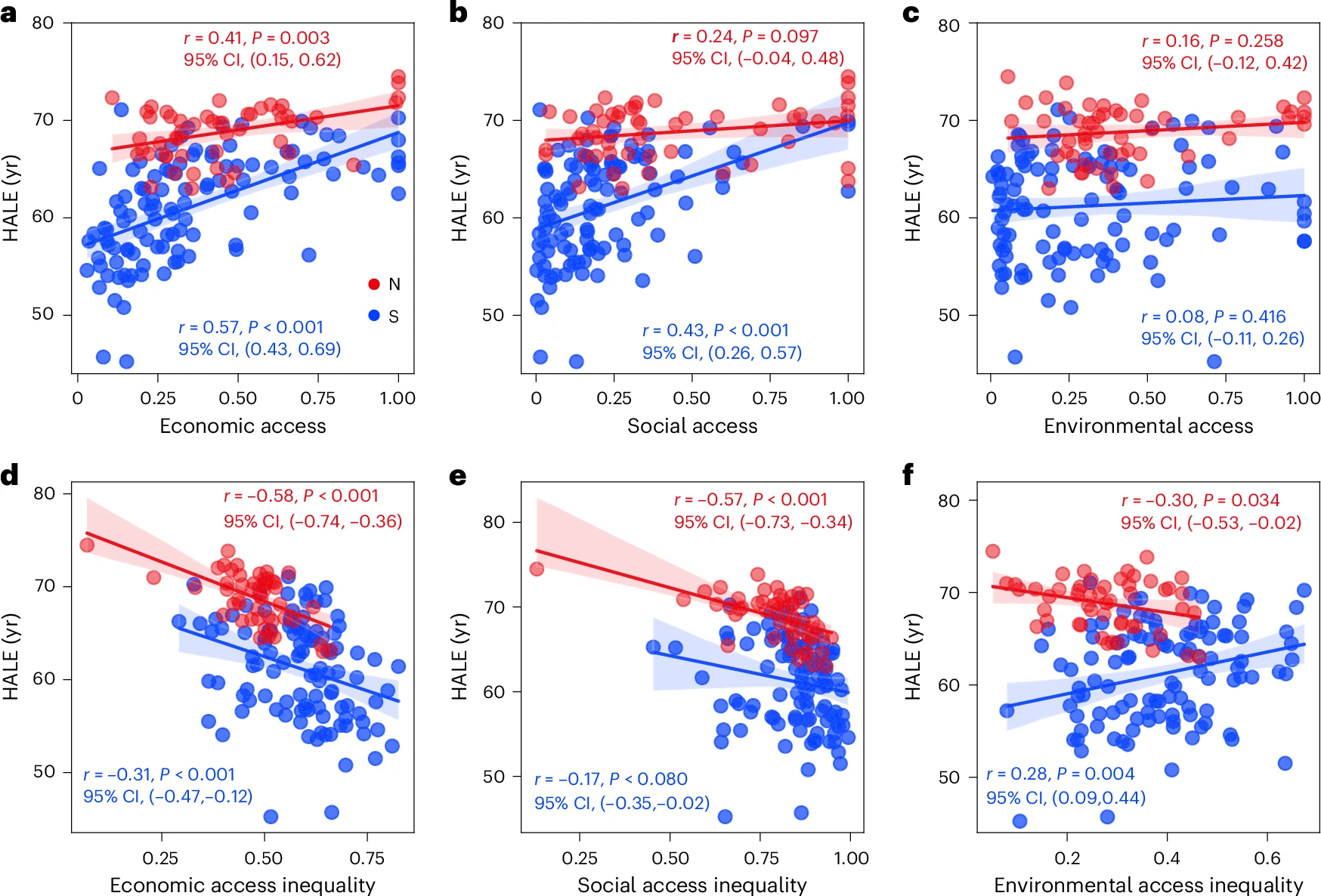Inequality in infrastructure access and its association with health disparities

Economic, social and environmental infrastructure forms a fundamental pillar of societal development. Ensuring equitable access to infrastructure for all residents is crucial for achieving the Sustainable Development Goals, yet knowledge gaps remain in infrastructure accessibility and inequality and their associations with human health. Here we generate gridded maps of economic, social and environmental infrastructure distribution and apply population-weighted exposure models and mixed-effects regressions to investigate differences in population access to infrastructure and their health implications across 166 countries. The results reveal contrasting inequalities in infrastructure access across regions and infrastructure types. Global South countries experience only 50–80% of the infrastructure access of Global North countries, whereas their associated inequality levels are 9–44% higher. Both infrastructure access and inequality are linked to health outcomes, with this relationship being especially pronounced in economic infrastructure. These findings underscore the necessity of informed decision-making to rectify infrastructure disparities for promoting human well-being.

Left panel: Country-level distributions of human access to economic, social, and environmental infrastructure, respectively. Right panel: Country-level economic, social, and environmental infrastructure access inequalities measured by the Gini coefficient, respectively.
Given the broad interpretation of infrastructure, here we define infrastructure as the physical systems and facilities essential for the functioning of the economy and society, infrastructure access as individuals’ capacity to reach and use nearby infrastructure, and infrastructure access inequality as geographical disparities in the availability of these systems and facilities. We categorize infrastructure into three types based on its primary function: economic, social and environmental. Economic infrastructure encompasses facilities that support business activities, such as telecommunication, energy supply systems, and transport and distribution networks. Social infrastructure comprises facilities providing social services, such as schools and hospitals. Environmental infrastructure, linked to living conditions and ecosystem services, includes resources such as water and waste facilities, green spaces, clean air, and thermal comfort. This multi-dimensional conceptualization of infrastructure leads to an enhanced understanding of the diverse ways in which individuals meet their needs and communities manage public goods across regions.

Conceptual framework and research design. a, Definition and classification of economic, social and environmental infrastructure in this study. b, Overview of the research design.
Despite hosting 85% of the global population, Global South countries have 50–80% of the infrastructure access but experience 9–44% higher inequalities compared with Global North countries. In particular, African and Asian countries stand out with the lowest levels of infrastructure access and equality, which highlights a severe deficiency in local infrastructure conditions. Although the Global North generally demonstrates higher access and lower inequality in infrastructure than the Global South, this by no means suggests that infrastructure development within these countries is uniform. Even in the developed world, we find a considerable number of countries with severe inequalities in infrastructure access, particularly in the social dimension, where 42 of the 54 Global North countries have a Gini value larger than 0.7. Our composite maps also highlight distinct regional disparities within Global North countries. For example, in Class I countries such as Canada and the United States, 16% (541 out of 3,402) of their counties are classified under Class II or III. Conversely, Class II or III countries, such as those in Africa and Asia, can encompass regions classified as Class I.

Composite maps of overall infrastructure access levels.
Our analysis also sheds light on the linkages between infrastructure and human health, underscoring that equitable access to infrastructure, particularly in the economic dimension, is fundamental for enhancing human health and well-being. At the country scale, we find a positive relationship between infrastructure access and HALE and a negative relationship between infrastructure access inequality and HALE. Our mixed-effects regression modelling further advances current knowledge by offering a quantitative comparison of health disparities across different infrastructure types and between levels of access and inequality. The coefficient for economic infrastructure inequality (GiniEco) suggests that a 10% increase in economic infrastructure access inequality was linked to a one-year reduction in life expectancy, which underscores the key role of infrastructure inequality—a factor largely underexplored in the literature.

Scatter plots between infrastructure factors and health outcomes in countries in the Global North (N) and Global South (S).
Reference: Ying Tu, Bin Chen, Chuan Liao, Shengbiao Wu, Jiafu An, Chen Lin, Peng Gong, Bin Chen, Hong Wei, Bing Xu. Inequality in infrastructure access and its association with health disparities. Nature Human Behaviour. (2025).